Ever since I got my hands on a wood-fired pizza oven, my backyard has become the go-to spot for pizza nights.
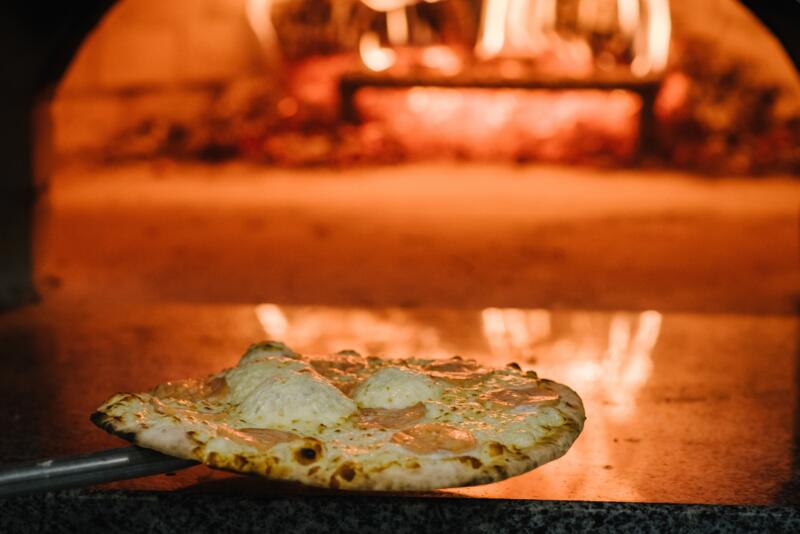
The allure of crafting that perfect, smoky-flavored pizza crust right in my own space was irresistible.
However, I quickly learned that not just any wood would do. The choice of wood not only affects the heat of the oven but also the flavor of the pizza.
It was a journey of trial and error, but I’ve come to understand the nuances of selecting the right wood for the job.
Let me share some key takeaways that have transformed my pizza-making experience.
Highlights
- Hardwoods are heroes: I discovered that hardwoods like oak, maple, and ash are the MVPs for pizza ovens. They burn hotter and longer, giving my pizzas that perfect crispy base and smoky aroma.
- Moisture matters: Dry wood is crucial. Wood with a moisture content below 20% ensures a hotter, more consistent burn, avoiding the pitfall of a smoky, undercooked pizza.
- Experiment with aromas: Different woods add unique flavors. Experimenting with cherry or applewood can add a subtle sweetness to the pizza, making each baking session an opportunity for culinary creativity.
In this article:
The Wood-Fired Pizza Phenomenon

There’s nothing quite like the taste of a pizza fresh out of a wood-fired oven. The superior flavor, the crispy base, and the unique smoky aroma that fills the air are simply irresistible.
But what makes a wood-fired pizza oven so special? Let’s dive in.
Superior Flavor and Crispy Base
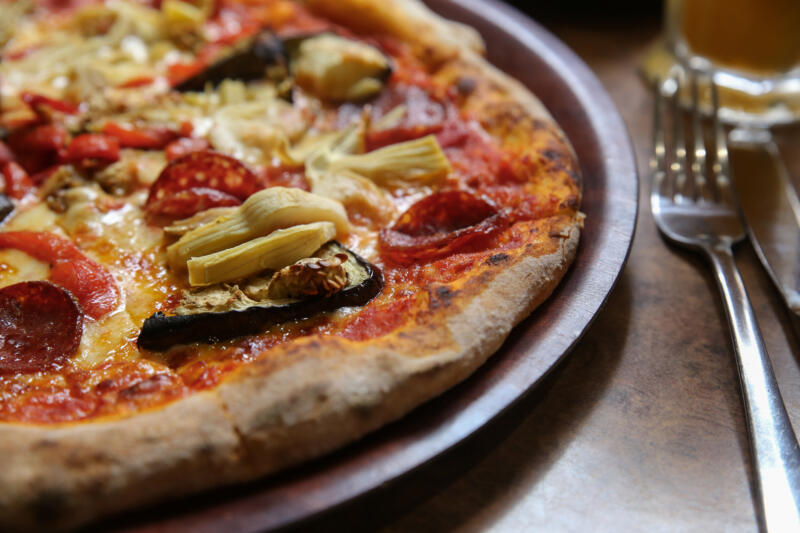
The high heat output and the unique cooking environment result in a pizza with a perfectly cooked, crispy base and a topping that’s cooked just right.
The intense heat cooks the pizza quickly, locking in the freshness and flavor of the ingredients, while the wood imparts a delightful smoky flavor that’s hard to replicate in a conventional oven.
The Unique Smoky Flavor
A distinctive advantage of a wood-fired pizza oven lies in the exceptional smoky flavor it infuses into the pizza.
This flavor is a result of the wood smoke that’s released during the cooking process. It infuses the pizza with a taste that’s rich, complex, and utterly delicious.
It’s a flavor that’s hard to describe but once you’ve tasted it, you’ll never forget it.
The Wrong Wood Can Affect Your Pizza
However, using the wrong wood can have a significant impact on your pizza.
Not all woods are created equal, and using the wrong type can affect the oven’s ability to reach the desired cooking temperatures. This can result in a pizza that’s undercooked or unevenly cooked.
Moreover, the wrong wood can also lead to an unpleasant flavor.
Some woods produce a lot of smoke that can overpower the taste of your pizza. Others can result in excessive soot build-up and creosote formation, which can be harmful if ingested.
Sap Considerations in Oven Wood Selection
Rolling in the deep flavors of a perfectly wood-fired pizza, let’s sprinkle a bit of light on the sap content of our fiery allies, the wood!
Sap is the fluid that circulates through a plant’s vascular system, carrying water, nutrients, sugars, and other essential compounds to various parts of the plant.
Picture sap as the tree’s special sauce, hustling nutrients all around its structure. But when that wood becomes our pizza oven’s fuel, the sap comes into play in a different, crackly, smoky way!
High-Sap Woods
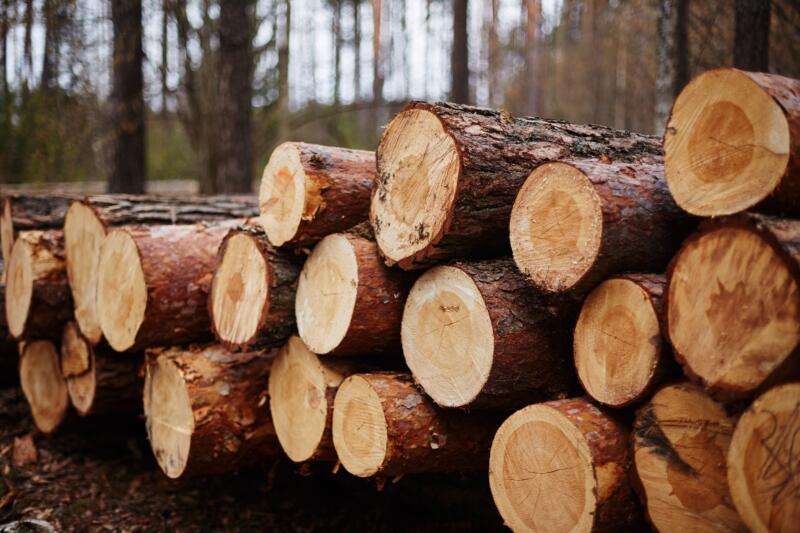
Woods with high sap content are often softwoods, hailing mainly from our coniferous tree friends. Here are a few to name:
- Pine
- Spruce
- Fir
- Cedar
- Redwood.
Using wood with a generous sap content? Expect a smoky soiree that could throw a little extra unexpected flavor onto your pizza.
Those woods tend to burn at a lower temperature and produce more smoke, which may not be ideal for achieving the high, consistent heat needed for the perfect pizza crust.
Moreover, the excessive smoke and possible residue from high-sap woods can influence the overall aroma and taste of the pizza, sometimes overshadowing the fresh ingredients used on the pizza.
And it’s vital to note that these sap-laden woods can be a bit capricious in a pizza oven, with their tendency to pop and crackle, sending embers afloat. Always ensure that the wood you use for cooking is safe and suitable for that specific purpose.
Low-Sap Woods
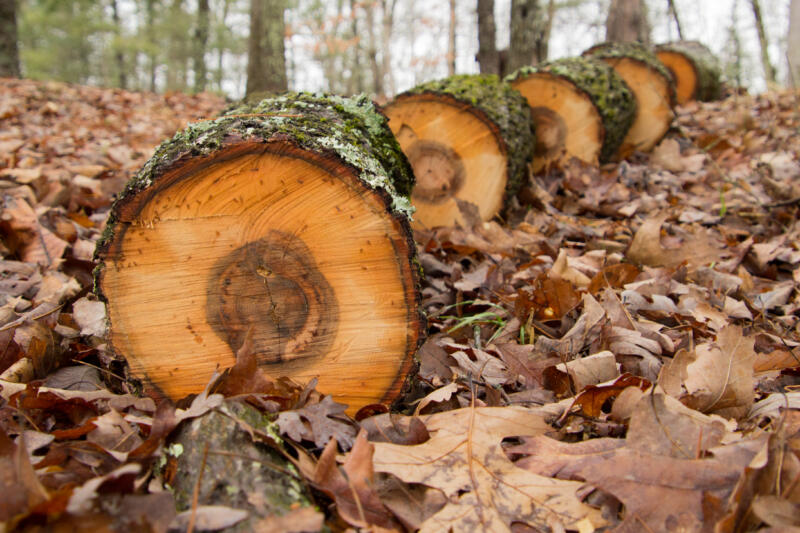
The pizza perfectionists often cozy up to hardwoods like oak or hickory, which, with their cleaner, hotter burn, assure your pizza’s taste stays true and your oven’s flame dances just right.
These woods, recommended by many world-famous chefs, provide a clean and hot burn, ensuring your pizza maintains its intended, delicious flavors. Here are some examples:
- Oak
- Hickory
- Maple
- Cherry
- Birch.
Using these woods helps to guarantee that your pizza’s crust gets the right amount of crispiness, and the toppings are cooked to perfection without an overpowering smokiness.
They also help in maintaining a consistent oven temperature, making your pizza-cooking experience smooth and hassle-free.
Types of Wood for Pizza Ovens
While hardwoods undeniably bring splendid benefits to pizza-making, choosing between kiln-dried, seasoned, or green variants often becomes a pivotal decision.
Each drying process (or lack thereof, in the case of green wood) impacts how the wood burns, its efficiency as a fuel source, and the flavors it imparts to pizzas. Let’s break it down:
Kiln-Dried Hardwood
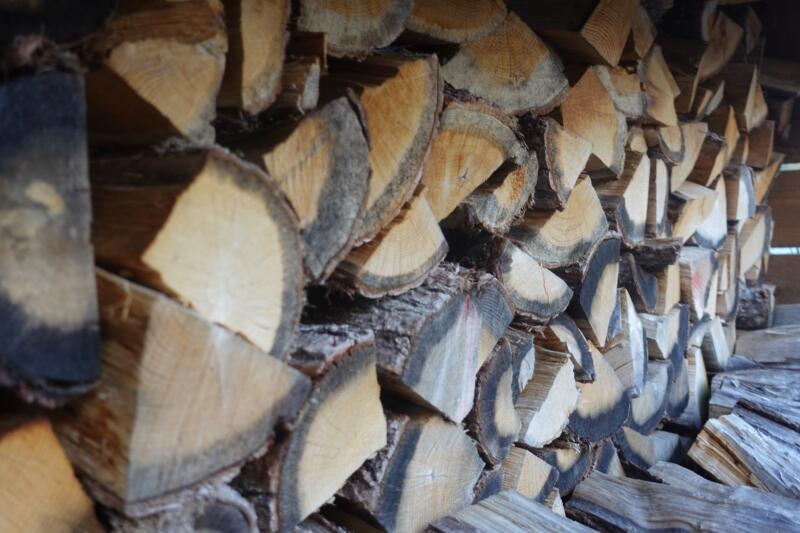
Kiln drying is a controlled process and can achieve precise levels of dryness in a shorter time compared to seasoning.
This type of hardwood is a popular choice for pizza ovens, and for good reason. These woods, which include species like oak and hickory, are known for their low sap contents.
This makes them ideal for cooking, as they burn cleanly and don’t produce excessive smoke.
Kiln-dried hardwood is preferred because of its low moisture content. This allows it to burn at a high, consistent heat output, which is crucial for achieving that perfect, crispy pizza base.
The heat from these woods is also efficiently distributed, ensuring your pizza is evenly cooked.
Moreover, kiln-dried hardwood enhances the flavor of your pizzas. The smoke from these woods infuses your pizza with a rich, smoky flavor that’s hard to beat.
One notable advantage of kiln-dried wood is its pesticide-free nature, providing a clean and safe fuel source for your pizza oven.
So, if you’re after a pizza with a robust, wood-fired taste, kiln-dried hardwood is the way to go.
Seasoned Hardwoods
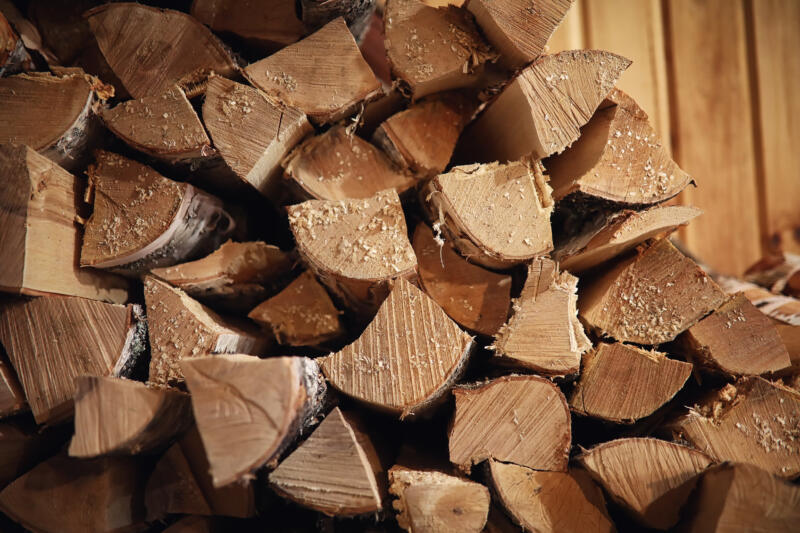
Seasoned hardwoods, such as oak, cherry or apple wood, birch, and hickory wood, are also excellent choices for pizza ovens.
These woods undergo a seasoning process, which involves drying them out over a period of time. This process affects the burning characteristics of the wood, making it burn longer and hotter, and it also influences the flavor profile of the smoke.
Hardwoods like oak, maple, and ash are often preferred due to their density, heat output, and consistency in burning. These woods provide the scorching temperatures required by wood-fired pizza ovens, ensuring your pizzas are cooked to perfection.
Furthermore, seasoned hardwoods enhance the flavor of your pizzas. The smoke from these woods imparts a unique taste to your pizza, adding an extra layer of complexity to its flavor profile.
So, if you’re looking to experiment with different flavors, seasoned hardwoods are worth considering.
Green Wood
While it might be tempting to use any wood you have on hand, it’s important to note that not all wood is suitable for pizza ovens.
Green wood, for instance, is generally unsuitable due to its high moisture content and difficulty in lighting.
Compared to dry wood, wet or green wood can cause a host of problems. The high moisture content in green wood can lead to a smoky, creosote-laden fire.
Creosote is a byproduct of wood combustion that can impart a bitter taste to food. This is far from the delicious smoky flavor we desire from a wood-fired pizza oven.
Moreover, green wood can negatively impact the cooking process. It tends to produce excessive smoke, which can overwhelm the flavor of your pizza and make it less enjoyable.
So, while green wood might be abundant and easy to come by, it’s best to stick with dry, kiln, or seasoned wood for your pizza oven.
Popular Choices for Pizza Ovens
When it comes to pizza ovens, there are a few brands that stand out from the crowd. Ooni, Solo Stove, and Stoke are among the most popular choices, and each of these brands has specific recommendations for the types of wood to use for perfect pizzas.
Ooni, a leading name in the world of pizza ovens, recommends using hardwoods like oak, hickory, or fruitwood.
These woods burn hot and clean, providing the high temperatures needed for a crispy, delicious pizza. They also impart a wonderful smoky flavor that enhances the taste of your pizza.
Solo Stove, another top choice, also recommends using hardwoods. They suggest using seasoned hardwoods like oak, maple, or birch, which provide a consistent heat output and a delightful flavor.
Stoke, while not as well-known as Ooni or Solo Stove, is a favorite among many pizza enthusiasts due to its affordable quality.
They recommend using kiln-dried hardwoods, which burn efficiently and add a unique flavor to your pizzas.
In conclusion, while the specific recommendations may vary, the consensus among these popular brands is clear: for the best results, use high-quality hardwoods in your pizza oven.
Whether you choose oak, hickory, fruitwood, or another type of hardwood, you’re sure to enjoy a delicious, wood-fired pizza that’s cooked to perfection.
Frequently Asked Questions
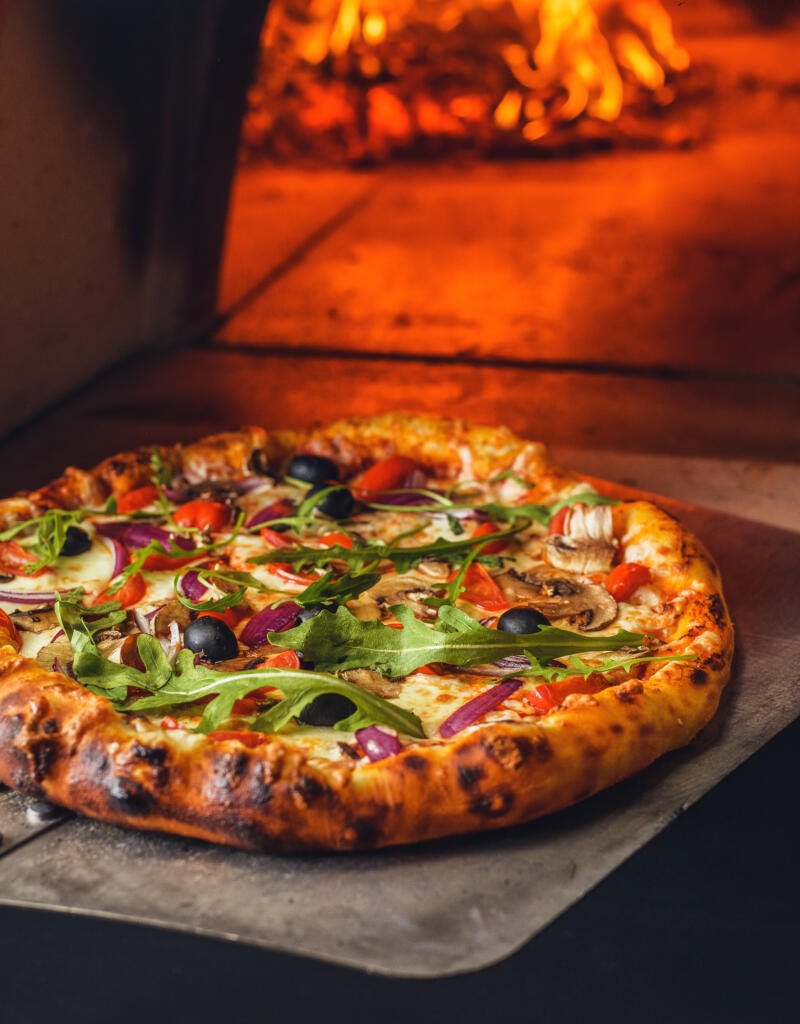
What wood do Italians use in pizza ovens?
Italians, known for their mastery of pizza making, typically use hardwoods such as oak, olive, or beech in their pizza ovens.
These woods burn hot and clean, providing the ideal conditions for cooking pizza. The choice of wood not only influences the cooking process but also adds a unique flavor profile to the pizza.
Is birch or oak better for pizza oven?
Both birch and oak are excellent choices for a pizza oven, each offering its unique advantages.
Oak tends to burn hotter and longer than birch, making it ideal for longer cooking times.
On the other hand, birch burns quicker but gives off a pleasant, mild flavor that can enhance the taste of your pizza. The choice between the two would depend on your specific needs and flavor preferences.
Can you use any hardwood in a pizza oven?
While most hardwoods can be used in a pizza oven, not all are ideal. The best hardwoods for pizza ovens are those that burn hot and clean, such as oak, ash, maple, and hickory.
These woods provide the high temperatures needed for perfect pizza cooking.
However, it’s best to avoid using woods with high sap contents as they can cause excessive smoke and potentially affect the flavor of your pizza.
How much wood is needed for a pizza oven?
The amount of wood needed for a pizza oven can vary depending on several factors, including the size of the oven, the type of wood being used, and the cooking temperature.
However, as a general rule, you can expect to use approximately 5-6 pieces of wood to heat the oven initially, and then 1-2 pieces per hour to maintain the temperature.
How dry should wood be for a pizza oven?
Wood for a pizza oven should be as dry as possible. Ideally, the moisture level of the wood should be below 20%.
This allows the wood to burn efficiently and produce the high temperatures needed for cooking pizza.
Wet wood can result in excessive smoke and difficulty in maintaining the desired temperature, so it’s best to stick with dry wood for the best results.
Closing Thoughts
We’ve covered a lot of ground in this article, from the benefits of using a wood-fired pizza oven to the specific types of wood that can enhance the flavor of your pizza.
We’ve also discussed the importance of using dry, seasoned hardwoods and avoiding unsuitable woods like green or laminated wood.
Whether you’re a seasoned pizza maker or just starting out, using the right wood can truly elevate your pizza-making game.
So, why not give these techniques a try? Experiment with different wood types and see how they influence the taste of your pizzas.
And remember, if you have any questions or comments, don’t hesitate to share them. We’re always here to help you on your pizza-making journey.